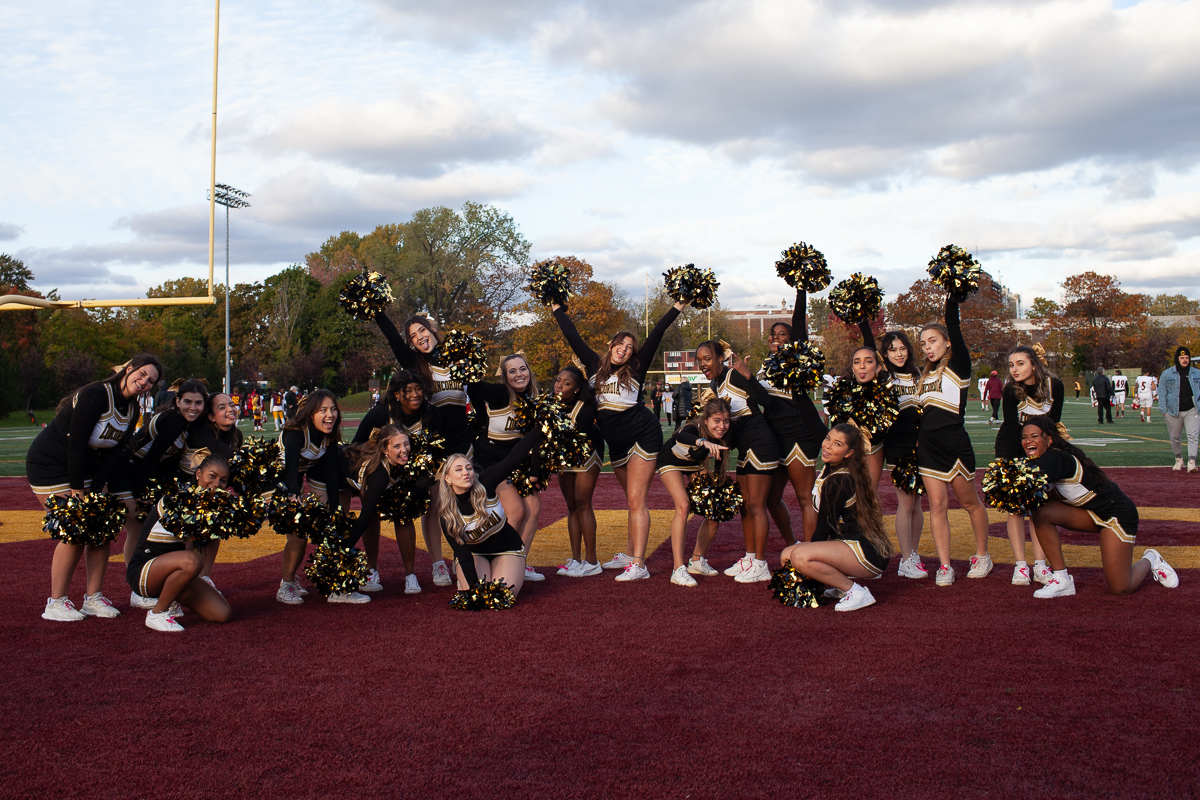We’ve all seen people playing this game at parks across Montreal, and now with its sudden popularity organizers want it to be recognized as a legitimate sport
Charles Henri was in California when he first saw people playing roundnet. Curious, the Quebec native asked them what game they were playing. Soon after, he bought a spikeball set and returned to Quebec. Every time he would play, people would stop and ask what the game was called.
“I started playing and everyone would stop by and try it. They all wanted a spikeball set,” Henri said.
A mix of his love for the game and with clear interest from onlookers prompted Henri to become a global ambassador, partnering with the Spikeball Roundnet Association (SRA), a position he has now held for over six years.
Roundnet is a sport that consists of two teams of two players. Like doubles in volleyball, the main objective is to send the ball into the other team’s zone. The only difference is that the ball is smaller, and instead of a net, a mini trampoline is positioned in the center of the playing surface.
Also a roundnet competitor, Henri jumped on the opportunity to grow the sport in Quebec by creating the Fédération québécoise de roundnet. In the summer of 2017, a provincial tour Henri hosted consisted of roughly 300 team registrations, which jumped to over 700 before the pandemic in 2019.
As a flopped product originally introduced in the 1980s, spikeball was a product re-released for consumers in 2008. Attempting to turn the game into a legitimate sport, the SRA was introduced as the governing league in the United States. Known to many as spikeball, the association had to change the sport’s name in order to keep their trademark, thus changing the name to roundnet.
Nora White, senior sport development manager at the SRA, mentioned that though spikeball hosted occasional tournaments in 2012-13, 2016 saw the SRA introduce four regional tournaments and one national tournament, propelling the league and the sport’s popularity.
“Our first nationals had around 75 teams. To put it into perspective, the Ohio State Roundnet Club alone just hosted a 70-team tournament just a few weeks ago,” White said.
White described the rise in popularity and competition over the past year amid the pandemic as pure insanity, as they just held their biggest national event to date.
“Our national championship that happened a couple of weeks ago had 400 teams. […] To grow from 30-40 teams for one event to now over 400 is insane.”
Current organizations that once needed assistance from the SRA like Utah Roundnet and Texas Roundnet have now become so popular in their respective regions that they now host their own events without the association’s involvement. The SRA has been offering ambassadorship programs to grow the sport at an amateur level but is now set to present it professionally.
Over the past year, the International Roundnet Federation was formed to oversee international play. Like FIFA for soccer, this international committee would govern other international governing federations to uphold the same rules in order to legitimize the sport. According to White, the next big step is to get recognized internationally. With a world tournament already planned in Belgium in 2022, over 30 countries will be represented, attempting to legitimize roundnet as a serious sport in the eyes of governing competition committees.
Unlike the SRA’s original role of being the international governing body, the league wants to take a step back and become the official competitive pro league for the sport, as well as offering sponsorships to pro-tour players.
“In the beginning, our word was the Bible, we don’t want that position,” White said. “We have helped and supported other organizations to grow like the International Roundnet Federation who will decide their own rules for international play.”
The sport’s growth has been on such a positive incline that the SRA also provides televised tournaments for the world’s leading sports broadcaster, ESPN.
“We’ve done three broadcasts per year for a couple of years, and we have three to four on the docket for 2022,” White said.
Henri is extremely optimistic about the future of the sport. He has personally seen such growth, and has decided to cut ties as chairman of the Fédération québécoise de roundnet to host independent tournaments in Quebec in order to advertise his own roundnet set. “I think it’s very bright, the 360 degrees of the sport make it so unique, and I think its uniqueness will bring it very far.”
The goal for the SRA is to spread the sport to an international audience. The ultimate goal is representing the sport internationally in the Olympics; however, it’s still too soon to know when — or if — that will be.
Photograph by Robert Austin
